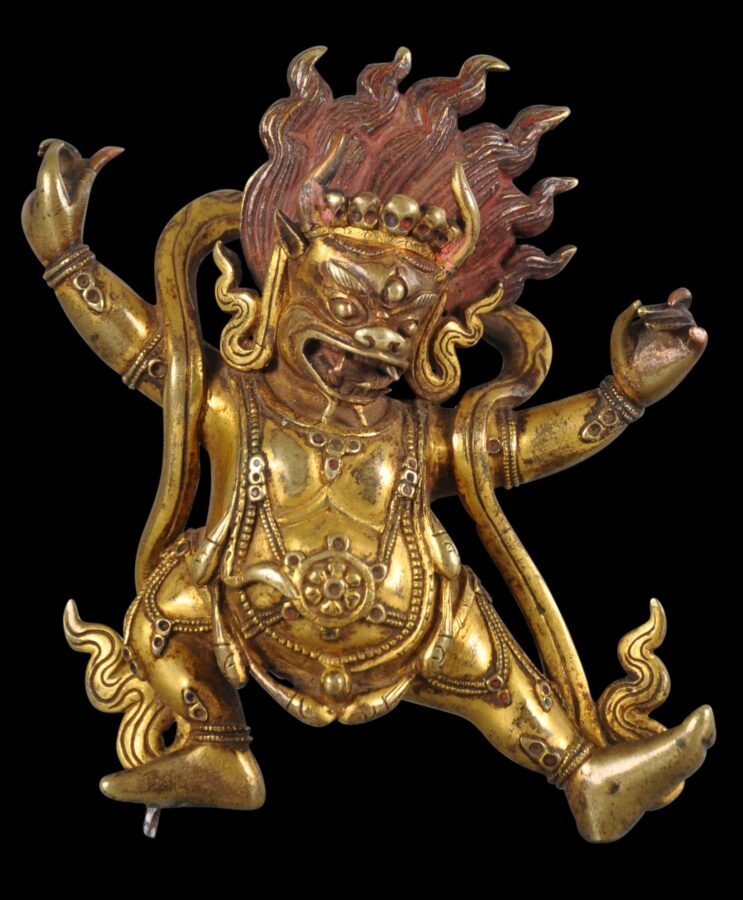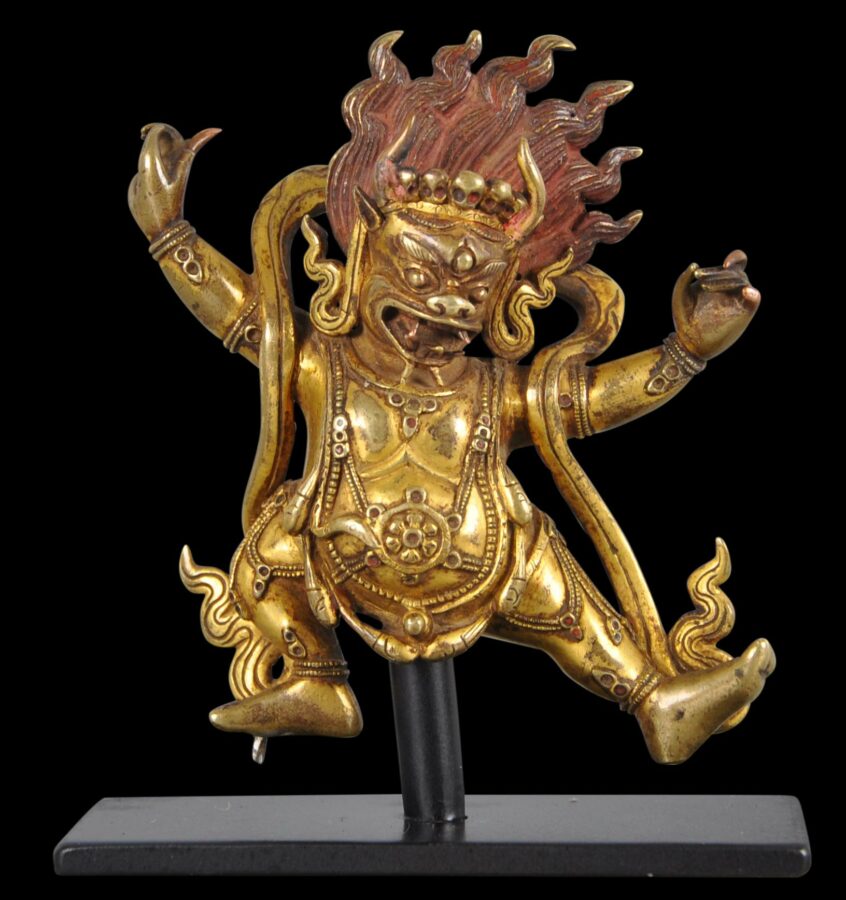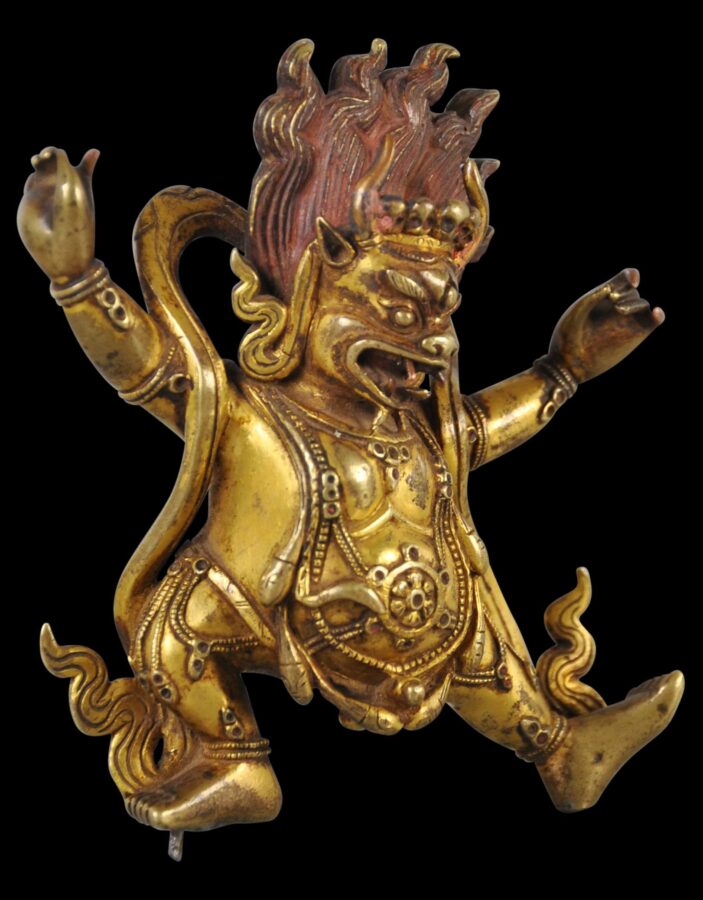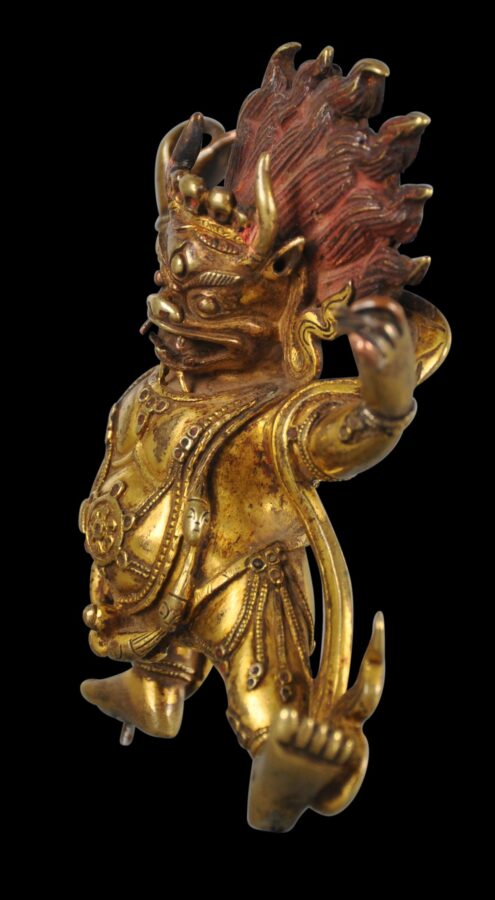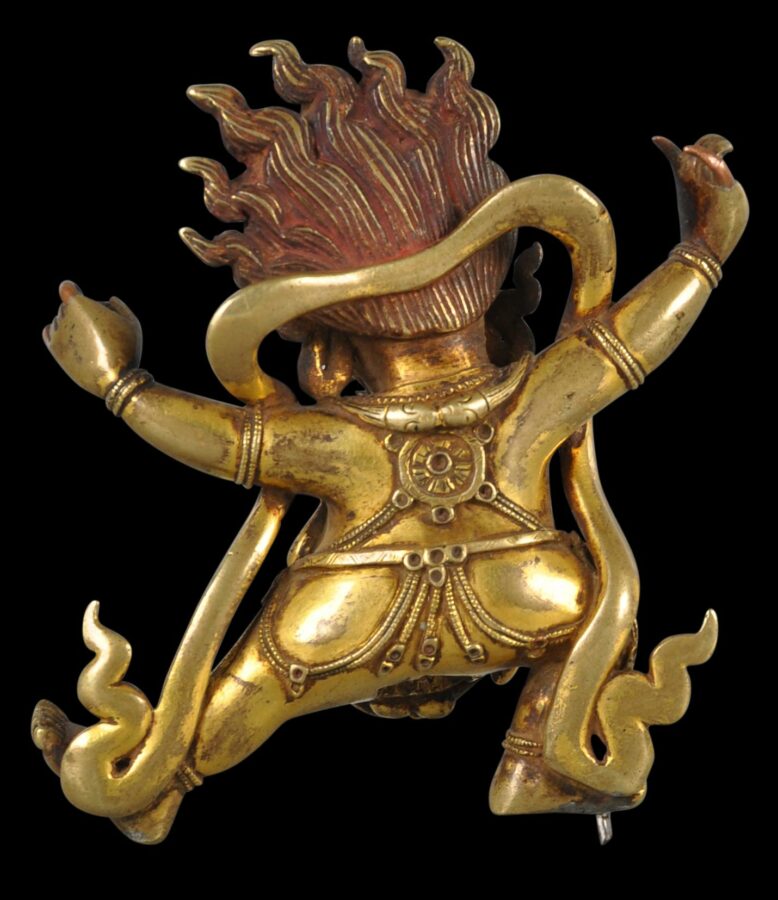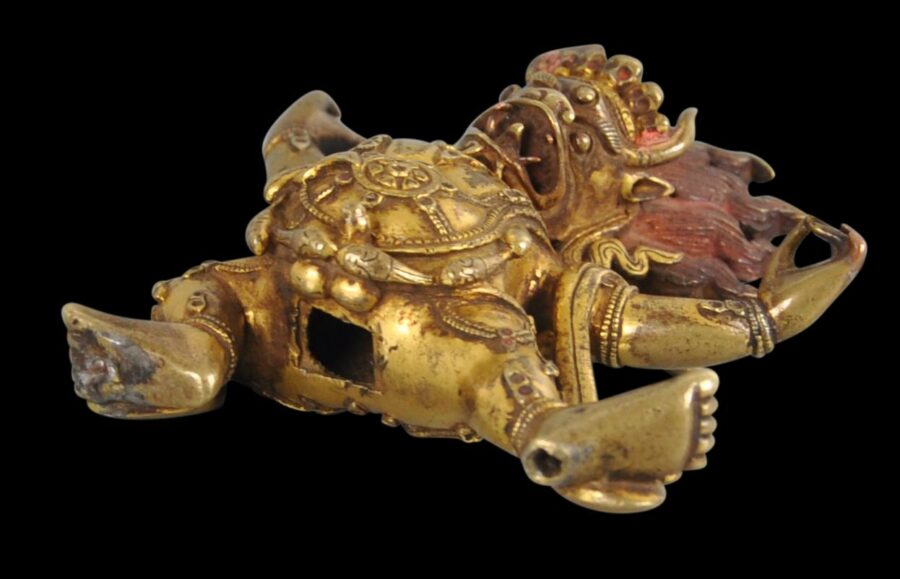The image of Yama Dharmaraja (Chi-Dup) of gilded copper alloy stands in pratyalidhasana with arms outstretched and hands poised in karana mudra. The deity has a bull’s head and horns, a third eye on the forehead, and a ferocious, glaring expression with fangs and a protruding tongue. He wears a long, wind-blown scarf, various jewelled girdles, armlets and anklets.
There is a cakra on his bulging stomach, and one on his upper back. He wears a diadem of five skulls and a garland of stylised severed heads that stretches to beneath his below. His flaming hair, representative of transformation, is decorated with red-orange pigment, as is the interior of his gaping mouth. The underside of the image reveals prominent testicles.
Originally, the image here would have stood atop the back of a buffalo. Often these bases are lost however.
Images of the various wrathful deities such as Vajrapani, Mahakala and Yama Dharmaraja are easily confused, and often there is little to tell them apart. However, the pose of the example here is most consistent with sculptural depictions of Yama Dharmaraja.
Yama Dharmaraja is a wisdom deity that is central to the Vajrabhairava Tantra which is common to the Sakya, Kagyu and Gelug Tibetan Buddhist sects. Each teaches that Manjushri took the form of Yama Dharmaraja to subdue death (‘Yama’), the personification of which represents endless suffering through the cycle of death and rebirth. The Gelugpa regard the deity as one of the order’s three main protectors. This role is shown in the image here which has been cast with a ferocity and power to suggest Yama Dharmaraja’s role as a protector of the dharma.
There is some early restoration to several fingers – almost certainly this occurred in Tibet and is not uncommon with pieces that were highly valued by their owners. The restoration itself has a fine patina.
The image here is accompanied by a high-quality, custom-made, black display stand.
References
Linrothe, R., & J. Watt, Demonic Divine: Himalayan Art and Beyond, Rubin Museum or Art/Serindia Publications, 2004.
Pal. P., The Art of Tibet, The Asia Society, 1969.


